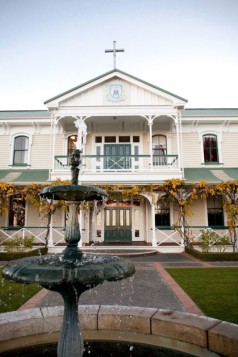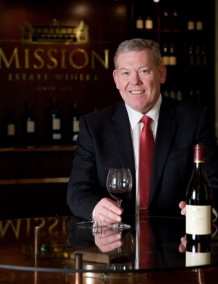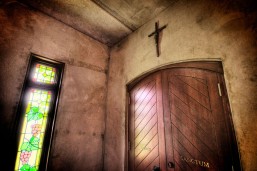Firstly, The Mission Estate have ensured astute governance, which has seen a CEO and Board that is genuinely supportive of the sustainability focus and initiatives. Together, they have worked to ensure that sustainability has become an integral part of the Business Plan.
Initially they started small, setting up projects to begin monitoring and measuring key components of their operation from soil testing to energy use. This included careful measurement of inputs and their impact to work out relevant ratios. While these metrics are now common practice in the industry, they weren’t 17 years ago. They did this without the use of technology equipment and software has made this process much easier. The winery now constantly monitors energy usage, including finding the coefficient of performance (COP) of their plant and has clear benchmarks in place across a number of measures.

The Mission Estate were one of the five wineries who initially set up an Environmental Management System and in 1998 they obtained their ISO Certification which recognised their ongoing commitment to sustainable viticulture and wine-making practices, two elements that are now common practice. At this time, they also started running some of their blocks organically.
From there, they have invested in capital that allows them to deliver on their sustainability objectives. A major step was the rebuild of the winery on the same footprint in 2005. Paul gives full credit to CEO Peter Holley and the Board for having a real understanding of the architecture and what was needed for this rebuild. Working closely with local engineers and an architect, a purpose-built wine-making facility was designed and constructed. The new production facility was designed to deliver and maximise both energy and water efficiency. Instrumental in this was the use of thermal mass construction.

The vast majority of energy used in the winery is consumed by refrigeration, and automation has allowed for energy reduction. A key step in this process has been in moving systems to operating overnight to make the best use of off-peak electricity and only cooling once a week in summer (metrics showed that it takes a full week for the temperature to return to the maximum rate).
Other steps included installing new lighting, removing the use of any diesel machinery (not an easy task when machinery is a key component of your operation); installing an inverter on the condensing heat exchanger; a separate glycol system; combined use of compressors and running these as close to capacity as possible for high energy efficiency; using self-generated nitrogen (instead of COP) which does not contribute to climate change; and, finally, operating on-site bottling and warehousing has seen a reduction in transport. Regular maintenance of equipment, regular checks for any leaks in refrigeration and air compressor systems also ensure high energy efficiency of all equipment. Over the years, leading edge viticulture techniques have been introduced including Precision Viticulture which identifies the variation in the vineyards using different sensors that are linked to GPS. This enables them to produce maps which optimise the vineyard’s performance and ultimately helps produces better quality wine.
The Mission Estate has seen clear successes on the initiatives with feedback to the Board being very positive. Peter has been able to offset their investment against the payback they have obtained, ensuring a positive return on investment for shareholders. This is important in that shareholders in this case are the Seminary for the Society of Mary whose members staff numerous parishes and secondary schools in New Zealand, as well as supporting various missionaries at home and abroad.

Where to start?
Paul’s recommendation to anyone wanting to move towards sustainability is to start collating data relevant to your business, your property or even your household. This involves measuring and tracking your inputs and their impact and then monitoring those from there on. Then, set a clear target and start identifying strategies to move towards it.
Finally, a vital part for The Mission Estate in what they do is being true to their label, being authentic in all they do at all stages of the process. This includes using local suppliers and growers, and ensuring that what is in the bottle is true to the label. Overarching this is a dedicated focus on genuinely caring about what is delivered to the consumer and how. Having sampled The Mission Estate’s outputs (a tough job, but someone has to do it!), it comes highly recommended.


